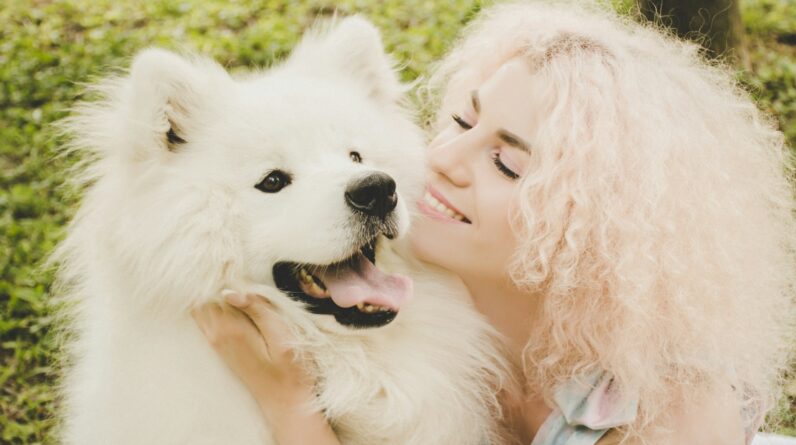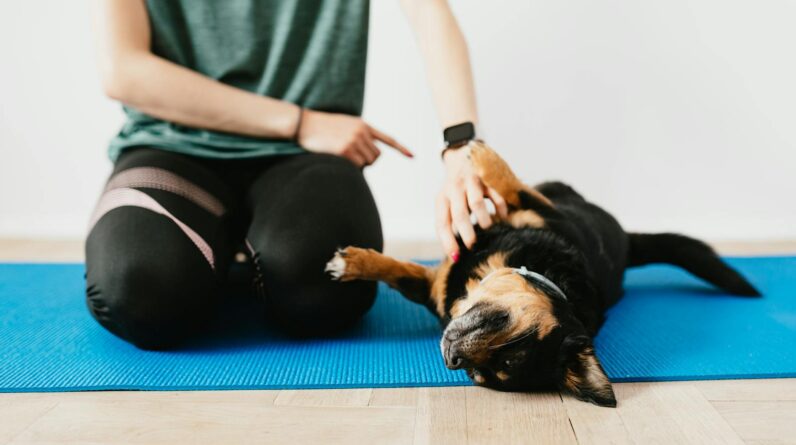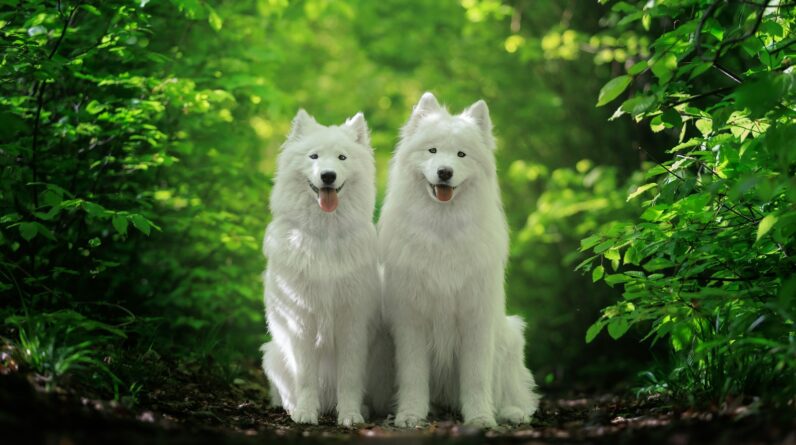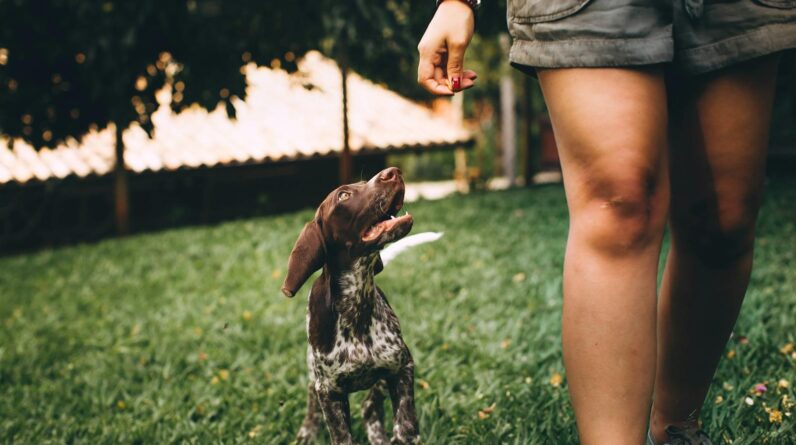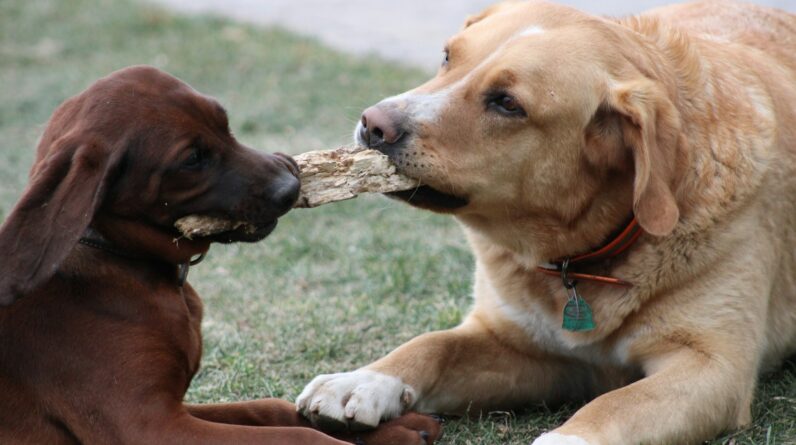
When Your Dog Acts Up: Tips for Tackling Troublesome Behavior
Hey there! If you’ve got a dog at home, you know they’re a bunch of joy wrapped in fur. But sometimes, they might start acting in ways that are not so cool. Maybe your fluffy buddy barks too much or chews on your favorite shoes. Yikes! Don’t worry, though. I’ve got some neat tricks to help you work through some common dog problems.
Loud-Mouth Barkers
Do you have a dog that loves to bark, bark, bark? It can give you a headache, right? Well, dogs bark for a few reasons. They might be bored, scared, or just want some attention. To help your dog bark less, try these ideas:
- Walkies and playtime: Give your dog lots of exercise. It’s like when you run around a lot and then feel super tired. Your dog will feel that way too and might bark less.
- Safe space: Make sure your dog has a cozy spot that feels safe. Sometimes they bark because they’re not feeling secure.
- Speak dog: Teach your dog commands like “Quiet” with treats. When they stop barking, give them a treat and they’ll think, “Hey, being quiet gets me yummy stuff!”
Crazy Chewers
To a dog, chewing is as fun as playing video games all day is for you. But when they chew on your stuff, it’s a big no-no. Here’s how to save your shoes:
- Toys, toys, and more toys: Get your dog lots of chew toys. They’ll think, “Wow, these are mine to chew!” and leave your stuff alone.
- Yucky-taste spray: There are sprays that taste bad to dogs but don’t hurt them. Spray it on things you don’t want your dog to chew. They’ll go, “Ew!” and walk away.
- Swap it out: If your dog is chewing something they shouldn’t, don’t just take it away. Swap it for a chew toy. They learn that toys are better to chew.
Jumping Bean Dogs
Some dogs jump on people because they’re super excited and want to say hi. But it can be too much, especially if they knock someone over. Here’s what you can do:
- Turn your back: When your dog jumps up, turn your back and ignore them. They’ll be confused and think, “Where did they go?” They’ll learn that jumping gets them no attention.
- Four on the floor: Teach your dog they get pets and treats only when all four feet are on the ground. They’ll soon figure out that staying down is way better.
- Practice makes perfect: Have friends or family help you. Ask them to come over, and if your dog jumps, do the no-attention trick. Practice lots!
Dogs That Pull on the Leash
Walking your dog should be fun, not a game of tug-of-war. If your dog pulls a lot, it feels like they’re walking you, right? Here’s how to deal with it:
- Stop the show: If your dog starts to pull, stop walking. Stand like a tree until your dog looks at you like “What’s going on?” Then start walking again when the leash is loose.
- Change directions: If they pull, turn around and walk the other way. It throws them off and they start to get that pulling won’t get them where they want to go.
- Treats and love: When they walk nicely without pulling, give them little treats and lots of “Good dog” cuddles. They’ll aim to please to get more goodies.
Nervous Nelly Dogs
Some doggos get scared easily, like during thunderstorms or around new people. If your dog is a Nervous Nelly, you can help them chill out. Here’s what to try:
- Comfy hideouts: Create spots where they can feel safe, like a blanket fort or a cozy bed in a quiet room.
- Stay calm: You being calm helps a lot. Your dog looks at you and thinks, “If they’re okay, maybe I’m okay too.”
- Distractions: Toys and games can take their mind off scary stuff. Start playing and they might forget what made them scared.
Dogs are amazing pals, but even they can have some off days or pick up some naughty habits. When this happens, remember to be patient. It’s like learning to tie your shoes or getting better at a video game – practice makes perfect! Giving your dog time, love, and the right training can solve a lot of these issues. And if things feel super tough, there are dog trainers and vets who know heaps about doggy behavior and can help you and your best furry friend. Good luck, and have fun with your pooch!
Why does my dog keep chewing on furniture?
Chewing is a natural behavior for dogs, but when they choose furniture, it can be a sign of boredom or anxiety. Providing your dog with plenty of chew toys and engaging in regular playtime can redirect this behavior to more appropriate items.
Consider also crate training or dog-proofing your home by keeping the furniture inaccessible when you’re not there to supervise. Consistent training and positive reinforcement when they chew on the right things also helps prevent unwanted furniture feasts.
How can I stop my dog from barking at everything?
Barking is a form of communication, but excessive barking can be disruptive. Start by figuring out why your dog is barking. Are they bored, scared, or seeing something outside? Addressing the underlying cause can often reduce the barking.
Training commands like “Quiet” can help, as well as providing more mental and physical exercise throughout the day. Consistency is key, so everyone in the household should respond to the barking in the same way.
What should I do if my dog is aggressive towards other dogs?
If your dog shows aggression towards other dogs, safety comes first. Use a leash during walks and consider a muzzle if needed. Identify the situations that trigger the aggression and try to avoid them while you work on the problem.
Seek the help of a professional dog trainer or behaviorist who uses positive reinforcement methods. They can provide a tailored plan to help your dog learn to behave more calmly around other dogs.
My dog won’t stop jumping on people, how can I teach them to stop?
Jumping up is often a dog’s way of greeting, but it can be unwanted. When your dog jumps, turn away and ignore them until all four paws are on the ground. Only then, give them attention. This teaches them that jumping doesn’t get your affection.
Consistently ask everyone your dog interacts with to do the same. With time and patience, your dog will learn that keeping all paws on the floor is the best way to receive attention and greetings.
Why does my dog keep digging up the yard, and how do I stop it?
Dogs dig for many reasons – because of their hunting instincts, to find a cool spot, or just for fun. If your dog is a persistent digger, try creating a designated digging area where they’re allowed to dig and reward them for using it.
Make sure your dog is getting enough exercise and has enough toys to keep them occupied. Sometimes more playtime and walks can reduce their desire to dig. Always praise non-digging behavior to encourage good habits.
Key Takeaways
- Understanding dog behavioral issues is essential for a healthy pet relationship. Focus on recognizing signs of problems early on to address them effectively.
- Aggression can be a major issue, manifested through growling, baring teeth, or biting. It’s important to understand what triggers aggression to prevent potential harm.
- Barking is normal but excessive barking indicates an issue. Identify the cause, whether it’s attention-seeking, warning, or boredom, and take steps to manage it.
- Chewing is a natural action for dogs but destructive chewing isn’t. Provide appropriate chew toys and keep valuables out of reach. Correct bad chewing behavior gently and consistently.
- Separation anxiety can lead to problematic behavior. To help, create a calm environment, practice leaving rituals, and consider leaving your dog with a comforting article of clothing.
- House training issues can be frustrating. Use positive reinforcement when your dog gets it right and avoid punishment when accidents occur.
- Digging is a common behavioral issue. Give your dog a designated digging area or distract them with other activities. Always praise your dog for digging in the right spot.
- Jumping up is often an excitement or attention-seeking behavior. Keep greetings low-key and teach your dog that keeping all four paws on the ground leads to rewards.
- Begging can be hard to resist but don’t give in. Feed your dog before you eat and ignore begging behavior to discourage it.
- Leash-pulling makes walks stressful. Train your dog to walk calmly by your side using treats and praise for good leash behavior.
- Not every behavioral issue is simply bad habits. Sometimes they signal health problems. If your dog’s behavior changes suddenly, it’s worth checking with a vet.
Final Thoughts
Alright, so tackling our furry friends’ behavior isn’t just about patience, it’s also about understanding. Behind every chewed shoe or indoor accident is a pooch trying to communicate. Remember that consistency is your best bud – set those rules and stick to them. And treats? They’re like doggy gold when rewarding good behavior.
Now, don’t shy away from professional help if things get ruff. Dog trainers and behaviorists are like translators between you and your dog. They’ll offer insights that could turn a barking mad situation into peace and tail wags. Most importantly, never forget that love and playtime go a long way in building a happy, well-behaved dog. Keep things fun, keep ’em loved, and you’ll both be on the path to a more harmonious home.



